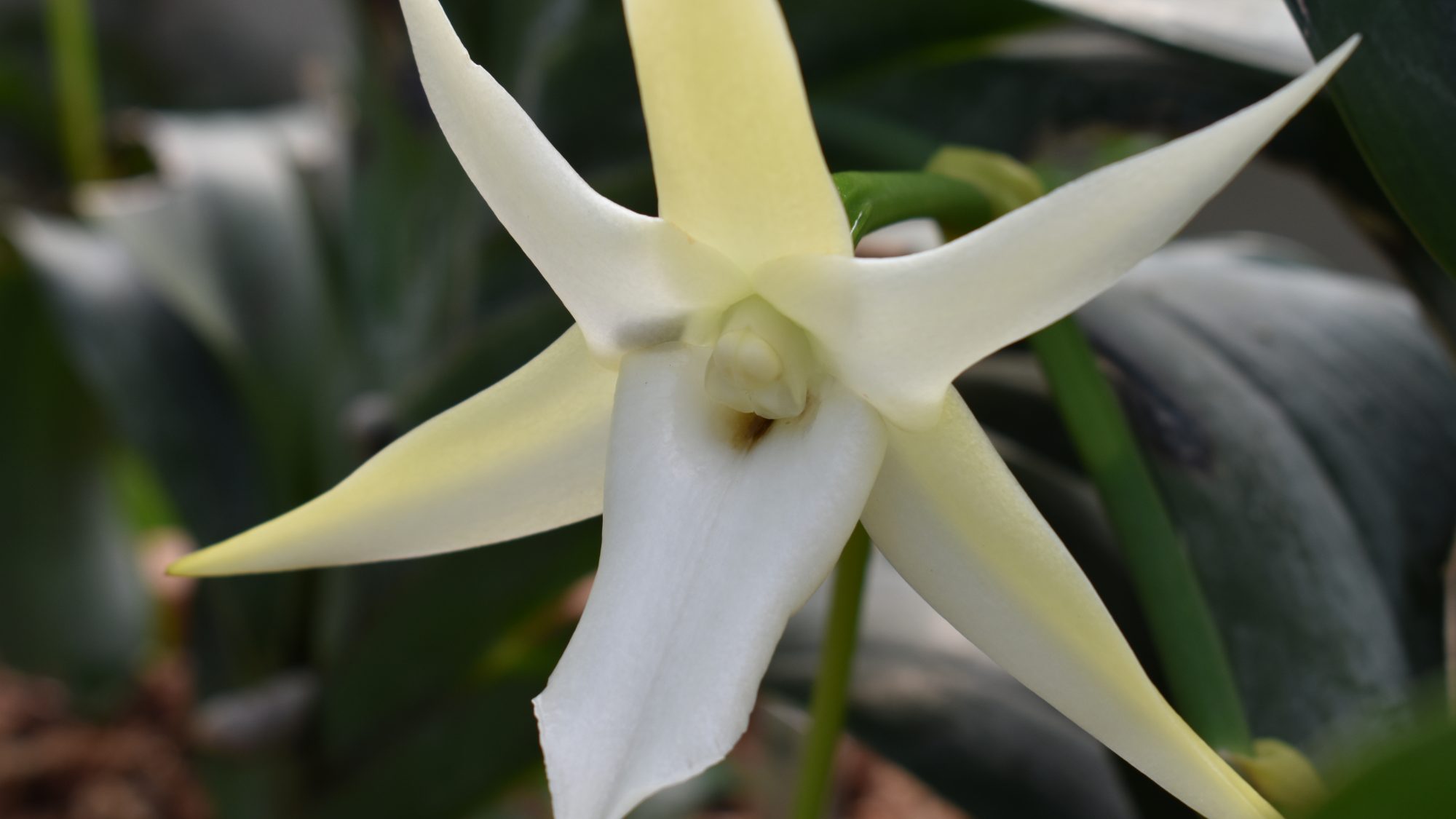Darwin’s orchid, with its long nectar spur, can be seen in the eastern tropical house.
A native of lowland forests of Madagascar, Angraecum sesquipedale is distinct in having a nectar spur up to 45cm in length, from which it takes its specific name sesquipedale, which is Latin for ‘one and a half feet’. The common name for this species, Darwin’s orchid, arose because Charles Darwin predicted that this species had evolved with, and could only be pollinated by, a specific insect with a proboscis (tongue) long enough to reach the nectar held at the base of the spur. At the time of this prediction Darwin was ridiculed by many for this prediction, but after his death a hawkmoth (Xanthopan morganii var. praedicta), with a suitably long proboscis, was discovered in the lowland forests of Madagascar. This is an epiphytic orchid with large, fleshy, star-shaped flowers held in spurs, and it has a sweet scent which intensifies at night to attract its pollinator.

